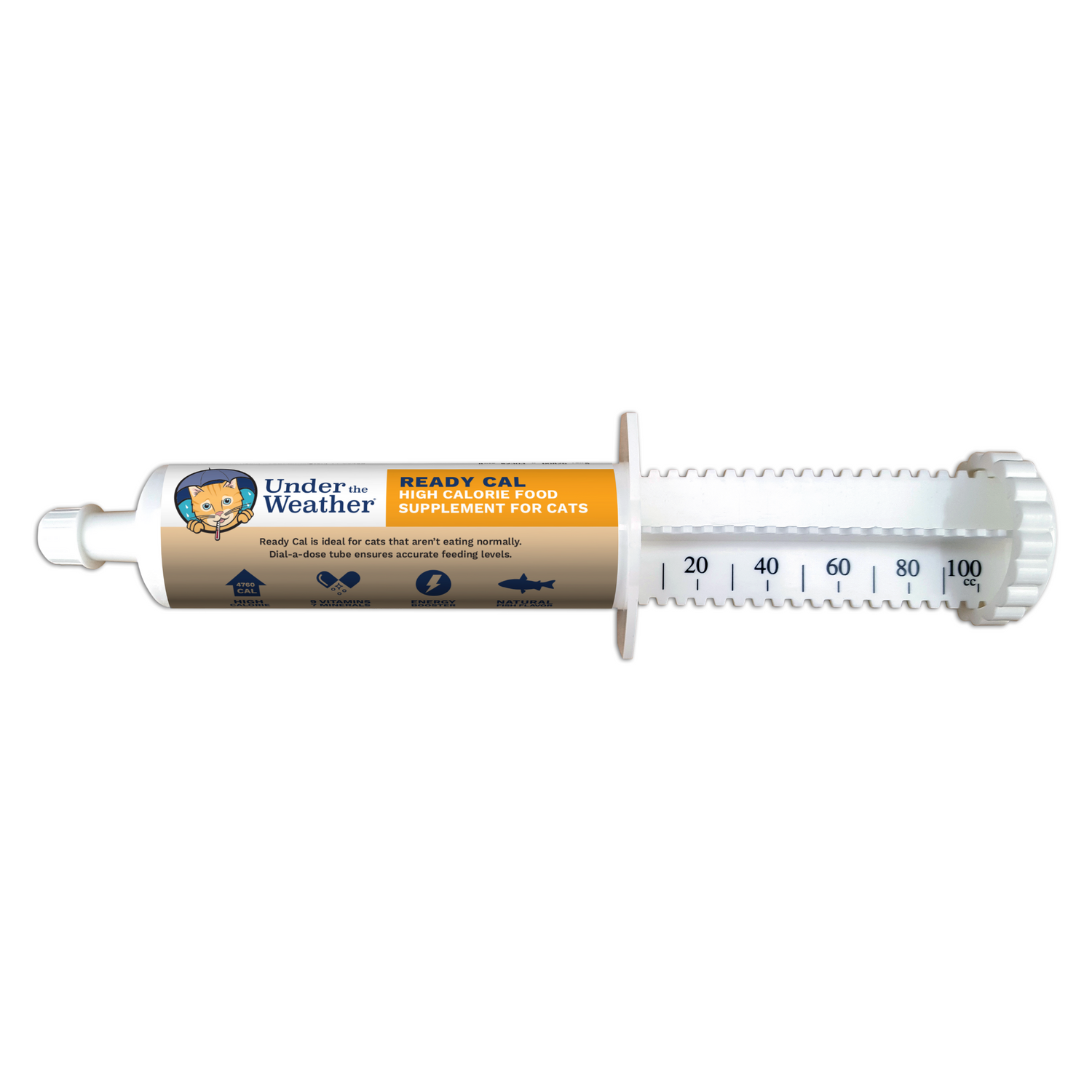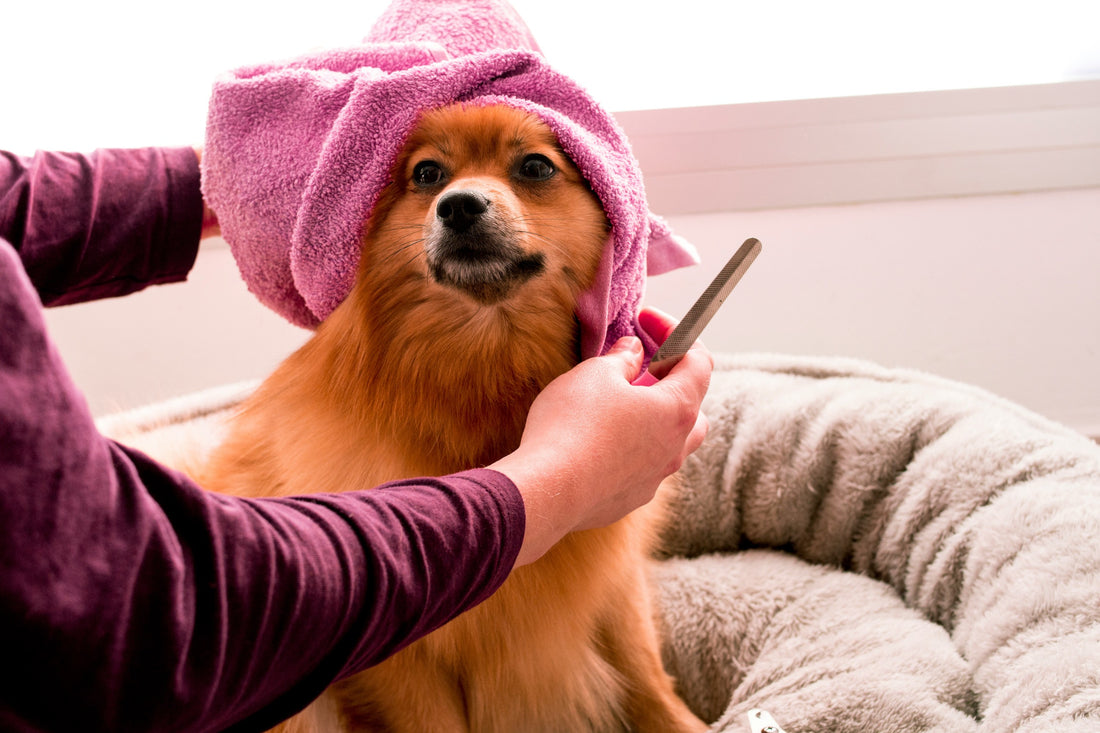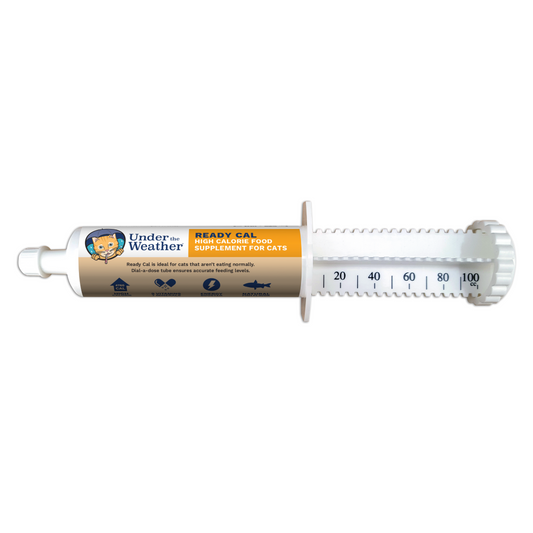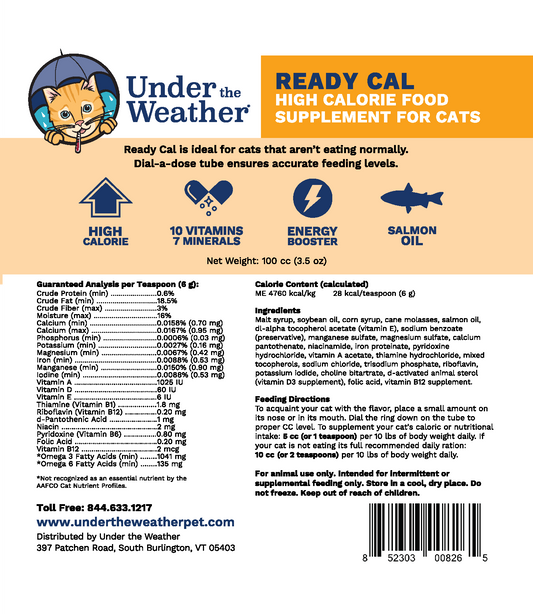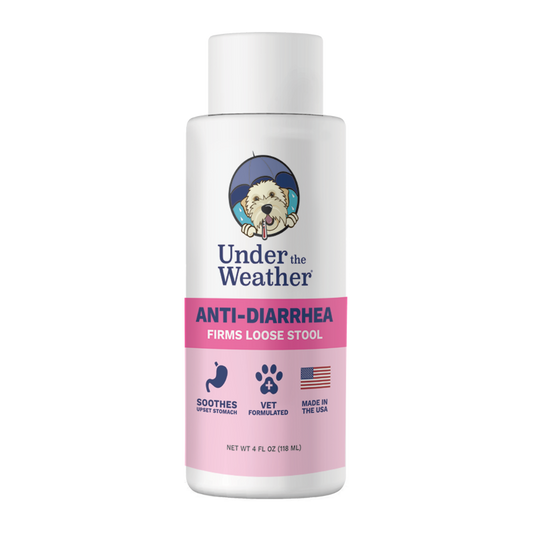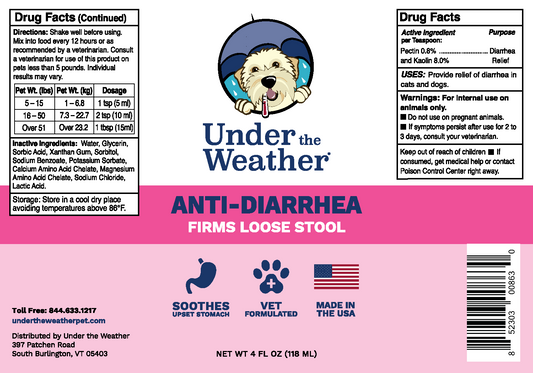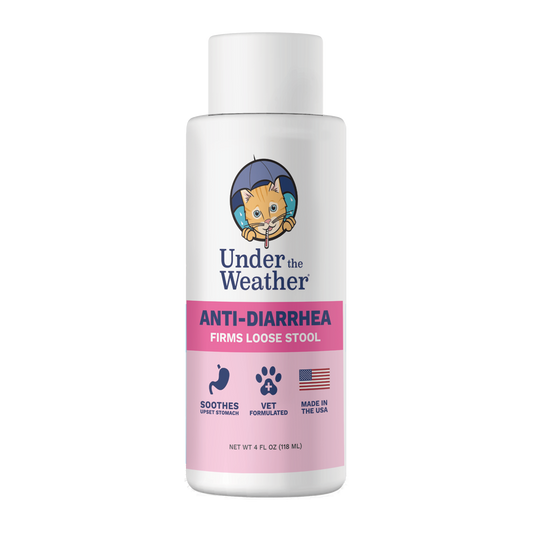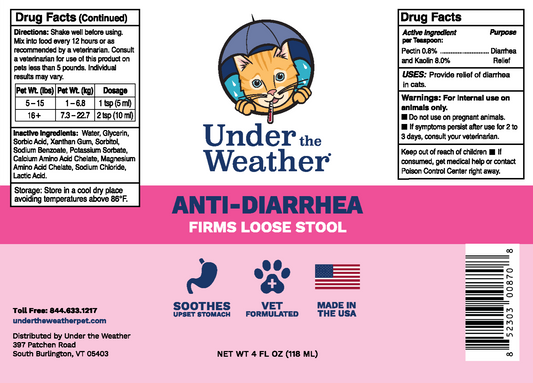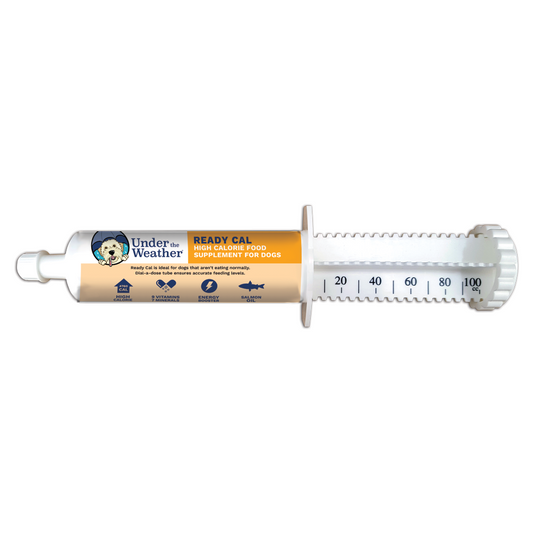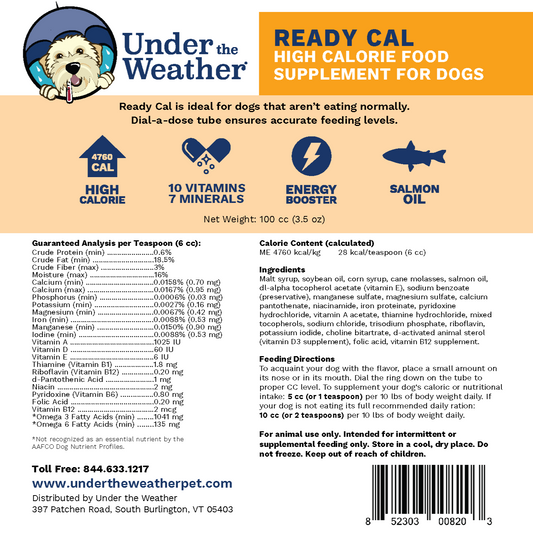As a pet owner, one of the surefire ways to keep your dog looking and feeling their best is by maintaining a shiny coat. A healthy coat not only enhances your dog's appearance but also serves as an indicator of their overall well-being. Today, the canine friends at Under the Weather explain the importance of a healthy dog coat, discuss essential nutrients for coat health, provide guidance on choosing the right dog food, delve into regular grooming practices, and share additional care tips to ensure your furry friend's coat remains lustrous and healthy.

Understanding the Importance of a Healthy Dog Coat
A shiny coat is more than just a superficial attribute – it reflects your dog's internal health. A healthy coat is smooth, soft, and free of dryness or greasiness. It indicates that your dog's skin is well-hydrated and that there is proper blood circulation. By regularly assessing your dog's coat, you can gather valuable insights into their overall well-being.
But what exactly does a healthy dog coat look like? Let's delve deeper into the indicators of a healthy coat. A vibrant and shiny coat, free from excessive shedding or hair loss, is a positive sign. It shows that your furry friend's body is receiving the necessary nutrients to maintain a glossy appearance. Additionally, a coat that's free from mats, tangles, dandruff, or itching is indicative of good coat health. These issues can often be a result of poor grooming habits or underlying health conditions that need attention.
The Connection Between Coat Health and Overall Well-being
It's important to understand that a dog's coat health is intrinsically linked to their overall well-being. Dogs with underlying health issues such as nutritional deficiencies, hormonal imbalances, allergies, or skin infections may exhibit a lackluster coat. These conditions can affect the production of oils that keep the coat moisturized and shiny, leading to a dull appearance. Therefore, it's crucial to take proactive steps to ensure your dog's coat remains healthy.
One way to promote a healthy coat is through a balanced diet. Providing your dog with high-quality, nutrient-rich food can help support their skin and coat health from the inside out. Omega-3 fatty acids, found in fish oil or flaxseed, can also be beneficial for maintaining a lustrous coat. Regular grooming, including brushing and bathing, is another essential aspect of coat care. It helps remove dead hair and distribute natural oils, keeping the coat in optimal condition.
Furthermore, paying attention to any changes in your dog's coat can provide early indications of potential health issues. If you notice excessive shedding, dryness, redness, or any other abnormalities, it's essential to consult with your veterinarian. They can help identify the underlying cause and recommend appropriate treatments or adjustments to your dog's care routine.
A healthy dog coat is not just about aesthetics; it serves as a window into your dog's overall well-being. By understanding the indicators of a healthy coat and taking proactive steps to maintain it, you can ensure that your furry companion is healthy and happy from the inside out.
Essential Nutrients for a Shiny Dog Coat
Feeding your dog a balanced diet that meets their nutritional needs is vital for maintaining a shiny coat. Two key nutrients that play a significant role in coat health are omega-3 and omega-6 fatty acids and high-quality protein.
Role of Omega-3 and Omega-6 Fatty Acids
Omega-3 and omega-6 fatty acids are essential for your dog's skin and coat health. These fatty acids help maintain the integrity of the skin barrier, reduce inflammation, and promote the production of natural oils that keep the coat moisturized. Rich sources of omega-3 fatty acids include fish oil, flaxseed oil, and chia seeds. On the other hand, omega-6 fatty acids can be found in plant-based oils like sunflower oil and evening primrose oil.
When it comes to omega-3 fatty acids, fish oil is often considered the gold standard. It contains eicosapentaenoic acid (EPA) and docosahexaenoic acid (DHA), which have been shown to have numerous health benefits for dogs. EPA helps reduce skin inflammation and itching, while DHA supports brain and eye development. Flaxseed oil and chia seeds are excellent plant-based alternatives for dogs with fish allergies or for pet parents who prefer a vegetarian approach.
Importance of High-Quality Protein
Protein is the building block of your dog's coat. It is crucial for the production of keratin, a protein that gives the coat its strength and shine. Ensure that your dog's diet includes high-quality protein sources such as lean meats, fish, and eggs. If your dog has specific dietary restrictions or preferences, consult with a veterinarian or animal nutritionist to find suitable alternatives.
When selecting protein sources for your dog, it's important to consider their individual needs. For example, if your dog is a working or highly active breed, they may require more protein to support their energy levels and muscle maintenance. On the other hand, senior dogs may benefit from protein sources that are easier to digest, such as lean poultry or fish. Remember, every dog is unique, and their dietary requirements may vary based on factors such as age, breed, and activity level.
Choosing the Right Dog Food for Coat Health
When it comes to selecting the right dog food for optimal coat health, it's essential to decipher the information on dog food labels and consider the benefits of wet food versus dry food.
Your furry friend's coat is not just a source of beauty but also an indicator of their overall health. A shiny, lustrous coat signifies that your dog is receiving the proper nutrients they need. So, how do you ensure that you're making the right choice when it comes to diet?
Deciphering Dog Food Labels
Reading and understanding dog food labels can be daunting, but it's necessary to make an informed decision. Don't worry; we're here to help you navigate through the jargon and find the best option for your canine companion.
First and foremost, look for dog foods that explicitly mention high-quality protein sources. Protein is vital for maintaining healthy skin and promoting hair growth. Additionally, a proper balance of omega-3 and omega-6 fatty acids is crucial for a shiny and well-nourished coat. These fatty acids help reduce inflammation and keep your dog's skin moisturized, preventing dryness and itchiness.
While examining the label, be cautious about certain ingredients. Avoid foods that contain artificial preservatives, fillers, or by-products. These additives can negatively impact both your dog's coat and your dog’s overall well-being. Instead, opt for natural and wholesome ingredients that provide the necessary nutrients without any unnecessary additives.
Wet Food vs. Dry Food: What's Better for Your Dog's Coat?
Now that you have a better understanding of what to look for on dog food labels, let's explore the debate between wet food and dry food. Both options have their advantages, so it's essential to consider your dog's specific needs and preferences.
Wet food, as the name suggests, has a higher moisture content. This can be beneficial if your dog doesn't drink enough water throughout the day. Adequate hydration is crucial for maintaining healthy skin and coat. Additionally, the higher moisture content in wet food can help prevent issues like dry and flaky skin.
On the other hand, dry food has its own set of benefits, particularly when it comes to dental health. The crunchy texture of dry kibble helps reduce plaque and tartar buildup, promoting good oral hygiene. Chewing on dry food can also stimulate saliva production, which plays a role in maintaining a healthy mouth and preventing dental diseases.
Ultimately, the choice between wet and dry food depends on your dog's unique needs. Some dogs may prefer the taste and texture of wet food, while others enjoy the crunchiness of dry kibble. Regardless of your choice, always ensure that the food you select meets your dog's nutritional requirements and supports their coat health.
Regular Grooming Practices for a Shiny Coat
Regular grooming plays a pivotal role in maintaining a shiny dog coat. By incorporating proper brushing techniques and bathing practices, you can keep your dog's coat healthy and glossy.
Grooming your furry friend is not just about aesthetics; it is also essential for their overall well-being. When you take the time to groom your dog, you are not only keeping their coat shiny but also promoting healthy skin and preventing potential health issues.
The Right Way to Brush Your Dog's Coat
Brushing your dog's coat removes loose hair, tangles, and debris while stimulating blood circulation and distributing natural oils. It is a bonding experience that allows you to check for any abnormalities, such as lumps or skin irritations.
When choosing a brush, consider your dog's coat type. For short-haired breeds, a bristle brush or a rubber curry brush works well. For long-haired breeds, a slicker brush or a pin brush is more suitable. Begin brushing from the skin outward in gentle, long strokes, following the direction of hair growth. Be sure to pay attention to more challenging areas, such as the armpits and hindquarters, where tangles and mats are more likely to occur.
Bathing Your Dog: How Often and What Products to Use
The frequency of bathing your dog depends on their breed, activity level, and coat type. While some breeds may require more frequent baths, others can go longer periods without needing a bath. Generally, bathing every 4-6 weeks is sufficient for most dogs.
When it comes to choosing the right shampoo, opt for a dog-specific product that is mild, hypoallergenic, and free of harsh chemicals. Avoid using human shampoos, as they can disrupt the pH balance of your dog's skin and cause irritation. During the bath, ensure you thoroughly rinse off all shampoo to prevent any residue from irritating your dog's skin.
Remember, grooming is not just about keeping your dog clean and looking good; it is also an opportunity to bond with your furry companion and show them love and care. So, make grooming a regular part of your routine and enjoy the benefits of a shiny, healthy coat for your beloved pet!

Additional Care Tips for a Healthy Dog Coat
In addition to proper nutrition and grooming practices, there are other factors to consider in maintaining a healthy dog coat.
The Impact of Regular Exercise on Your Dog's Coat
Regular exercise benefits not only your dog's overall fitness but also their coat health. Physical activity promotes good blood circulation and helps maintain a healthy skin and coat. Engage your dog in activities such as walks, playtime, and interactive toys to keep them active and their coat in top condition.
When to Seek Veterinary Help for Coat Issues
If you notice persistent issues with your dog's coat, such as excessive shedding, bald patches, or persistent itching, it is time to consult with your pup’s veterinarian. They can perform a thorough examination, identify any underlying health issues, and provide appropriate treatment or guidance to restore your dog's coat health.
Maintaining a shiny dog coat requires a combination of proper nutrition, regular grooming practices, and adequate attention to your dog's overall well-being. By understanding the importance of a healthy coat, providing essential nutrients, choosing the right dog food, following regular grooming habits, and implementing additional care tips, you can ensure your furry companion's coat remains vibrant, lustrous, and a true symbol of their optimal health.
Every Sale Supports a Shelter Pet. Learn More.
Created in Vermont. Learn More.
Written by: Min S. Lee
If you suspect your pet is sick, call your vet immediately. For health-related questions, always consult your veterinarian, as they have examined your pet, know the pet's health history, and can make the best recommendations for your pet.
